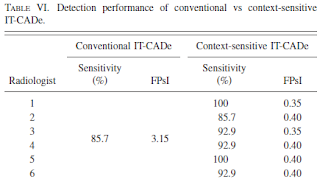Moving a camera 2500 degrees per second is such an awesome accomplishment that I cannot help myself, shamelessly long quote from IEEE Spectrum:
German researchers have developed a robotic camera that mimics the motion of real eyes and even moves at superhuman speeds. The camera system can point in any direction and is also capable of imitating the fastest human eye movements, which can reach speeds of 500 degrees per second. But the system can also move faster than that, achieving more than 2500 degrees per second. It would make for very fast robot eyes. Led by
Professor Heinz Ulbrich at the
Institute of Applied Mechanics at the
Technische Universität München, a team of researchers has been working on superfast camera orientation systems that can reproduce the human gaze.
In many experiments in psychology, human-computer interaction, and other fields, researchers want to monitor precisely what subjects are looking at. Gaze can reveal not only what people are focusing their attention on but it also provides clues about their state of mind and intentions. Mobile systems to monitor gaze include
eye-tracking software and head-mounted cameras. But they're not perfect; sometimes they just can't follow a person's fast eye movements, and sometimes they provide ambiguous gaze information.
In collaboration with their project partners from the Chair for Clinical Neuroscience,
Ludwig-Maximilians Universität München,
Dr. Erich Schneider, and
Professor Thomas Brand the Munich team, which is supported in part by the
CoTeSys Cluster, is developing a system to overcome those limitations. The system, propped on a person's head, uses a custom made eye-tracker to monitor the person's eye movements. It then precisely reproduces those movements using a superfast actuator-driven mechanism with yaw, pitch, and roll rotation, like a human eyeball. When the real eye move, the robot eye follows suit.
The engineers at the Institute of Applied Mechanics have been working on the camera orientation system over the past few years. Their
previous designs had 2 degrees of freedom (DOF). Now researcher
Thomas Villgrattner is presenting a system that improves on the earlier versions and features not 2 but 3 DOF. He explains that existing camera-orientation systems with 3 DOF that are fast and lightweight rely on model aircraft servo actuators. The main drawback of such actuators is that they can introduce delays and require gear boxes.
So Villgrattner sought a different approach. Because this is a head-mounted device, it has to be lightweight and inconspicuous -- you don't want it rattling and shaking on the subject's scalp. Which actuators to use? The solution consists of an elegant parallel system that uses ultrasonic piezo actuators. The piezos transmit their movement to a prismatic joint, which in turns drives small push rods attached to the camera frame. The rods have spherical joints on either end, and this kind of mechanism is known as a PSS, or prismatic, spherical, spherical, chain. It's a "quite nice mechanism," says
Masaaki Kumagai, a mechanical engineering associate professor at Tohoku Gakuin University, in Miyagi, Japan, who was not involved in the project. "I can't believe they made such a high speed/acceleration mechanism using piezo actuators."
The advantage is that it can reach high speeds and accelerations with small actuators, which remain on a stationary base, so they don't add to the inertial mass of the moving parts. And the piezos also provide high forces at low speeds, so no gear box is needed. Villgrattner describes the device's mechanical design and kinematics and dynamics analysis in a paper titled "Optimization and Dynamic Simulation of a Parallel Three Degree-of-Freedom Camera Orientation System," presented at last month's
IEEE/RSJ International Conference on Intelligent Robots and Systems.
The current prototype weighs in at just 100 grams. It was able to reproduce the fastest eye movements, known as
saccades, and also perform movements much faster than what our eyes can do. The system, Villgrattner tells me, was mainly designed for a "
head-mounted gaze-driven camera system," but he adds that it could also be used "for remote eye trackers, for eye related '
Wizard of Oz' tests, and as artificial eyes for humanoid robots." In particular, this last application -- eyes for humanoid robots -- appears quite promising, and the Munich team is already working on that. Current humanoid eyes are rather simple, typically just static cameras, and that's understandable given all the complexity in these machines. It would be cool to see robots with humanlike -- or super human -- gaze capabilities.
Below is a video of the camera-orientation system (the head-mount device is not shown). First, it moves the camera in all three single axes (vertical, horizontal, and longitudinal) with an amplitude of about 30 degrees. Next it moves simultaneously around all three axes with an amplitude of about 19 degrees. Then it performs fast movements around the vertical axis at 1000 degrees/second and also high dynamic movements around all axes. Finally, the system reproduces natural human eye movements based on data from an eye-tracking system." (
source)














